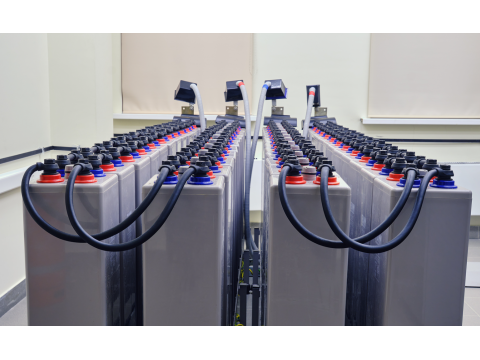Ensuring Uninterruptible Power for Surveillance Systems
Uninterruptible power supply (UPS) systems are essential for maintaining the operation of surveillance systems during power outages. This guide explains how to calculate and set up backup power for cameras and DVRs.
Backup Power for Security Cameras
To ensure uninterrupted operation of cameras, follow these steps:
Choose a Backup Power Unit:
Select a UPS with an integrated battery that supports the required voltage and current.Calculate Backup Time:
Use the following formula to estimate runtime:Where:
- : Backup time (hours)
- : Battery capacity (Ah)
- : Total camera current (A)
For example, a 7 Ah battery can supply 1 A for 7 hours or 0.5 A for 14 hours.
Determine Battery Requirements:
Rearrange the formula to calculate battery capacity:Avoid Overloading the Battery:
Ensure the battery's maximum output current is not exceeded. For instance, a 7 Ah battery cannot reliably sustain a 7 A load.Protect Against Deep Discharge:
Use a UPS with deep discharge protection to extend battery life.
Tip: For larger systems, divide cameras into groups and assign separate UPS units to each group.
Backup Power for DVRs
Most DVRs operate on 12V DC, often supplied by an external adapter. This makes them compatible with many UPS systems designed for cameras.
Steps for DVR Backup Power Setup:
Replace the DVR adapter with a UPS that supports 12V output.
Calculate power requirements:
- Check the DVR’s power consumption (e.g., 36W at 12V = 3A).
- Include additional current for hard drives (typically ~1A).
- Total example: 4A at 12V.
Select a UPS capable of sustaining this load for the desired duration.
Alternative: UPS for 220V Devices
If a DVR or NVR uses a built-in power supply or if the surveillance system includes a computer, a 220V UPS is the best option.
Key Considerations for 220V UPS:
- Power Rating: Choose a UPS with a power rating 20–30% higher than the total system consumption.
- Backup Time: Standard UPS systems may only provide 1–2 hours of runtime without additional batteries.
Cost vs. Benefit
While UPS systems provide critical backup power, extended runtime (beyond 2–3 hours) often requires expensive, high-capacity batteries. Assess your requirements and budget to strike the right balance.
For most residential and small business applications, ensuring 1–2 hours of backup power is a practical and cost-effective solution.
Conclusion
Uninterruptible power supply systems are vital for maintaining the reliability of surveillance systems. Whether using a battery-based UPS for cameras or a 220V UPS for larger setups, proper calculations and planning ensure effective backup power tailored to your needs.

